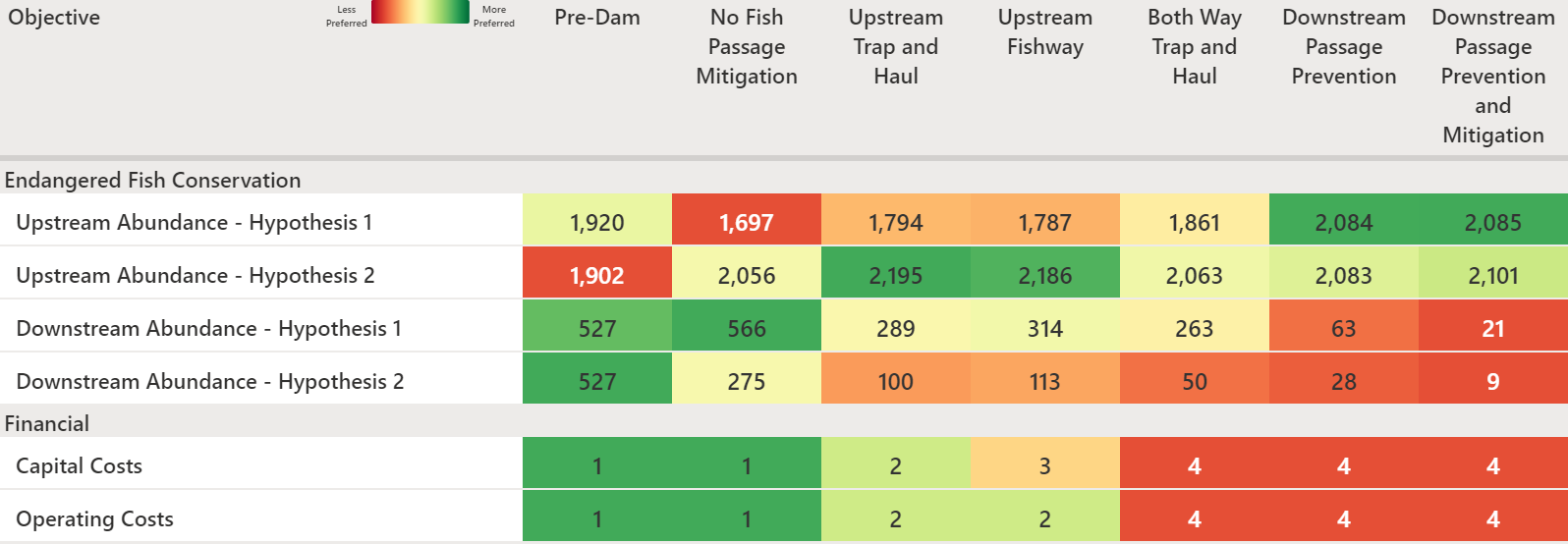Representing Uncertainty
The treatment of uncertainty is a big topic; here we focus rather narrowly on some ideas about representing uncertainty in a consequence table.
There are many uncertainties in environmental management. Fully characterizing and presenting them all to decision makers is likely to end up in information overload. A key task of the analyst is to decide which uncertainties matter and deserve to be presented in the consequence table. So while you may explore the risk profiles (i.e., the probability distributions of the range of possible outcomes) of each alternative for several or all objectives, you should choose to show only those that are relevant for the decision.
There’s no single right way to show uncertainty in a consequence table. You’ll have to think carefully about the best way to capture the key point decision makers need to consider.
Often the most important thing is to expose the difference in the risk profiles across the alternatives. In the table below, Alternative 3 has a very different risk profile than the others with respect to the objective of Native Fish. While its expected outcome is better than the other alternatives, there is a small chance, under a competing hypothesis, that it will advantage a competing native species, resulting in a significantly higher probability of extirpation. Here is one way to capture this effect in a consequence table (Gregory et al 2012). In this example, Alternative 2 clearly dominates Alternative 1 (outperforms it, or is at least equal, on all performance measures), but the choice between Alternative 2 and 3 is value-based, and will depend on decision makers’ risk attitudes. When developing the consequence table, the decision analyst must make sure to expose this risk trade-off so decision makers can exercise their risk attitudes.

Here’s another example, this time taken from a review of alternatives for helping an endangered fish pass upstream and downstream of a large dam. Experts had two competing models that predicted how many fish to expect on either side of the dam before and after the dam under each of various alternative ways of providing passage. The two models made different assumptions about irreducible uncertainties following from competing hypotheses about cause and effect.

Rather than argue over the ‘correct’ model, it was helpful to consider that both models might be correct, and to discuss the selection of a preferred alternative regardless.

